The Malmo Class ships were handsome, single funnelled vessels with two masts, a compact superstructure and their hulls were strengthened for ice. In order to expedite their design and completion they were somewhat old fashioned in propulsion, construction and appearance. They were virtually obsolete shortly after entering service, but served the Company well until the mid 1960s, their demise hastened by the advent of containerisation. In 1966, Volo and Truro were fitted with forklift trucks and modified to take both pallets and a limited number of 20-feet containers. However these modifications only meant that they were retained for up to three years following implementation of these “stop gap” measures. They were the last of the class to leave the fleet.
Although there were minor differences between the eight ships they were all powered by a T.3-cylinder (19.5, 32 & 54 x 36 inches) steam engine with a Bauer-Wach Exhaust Turbine and double reduction gearing and hydraulic coupling to a single shaft. A 4 bladed solid bronze propeller 13ft. 3in. diameter made by Manganese Bronze was fitted and the ships had a service speed of about 13.5 knots.
In addition to general cargo the ships carried twelve passengers in First Class accommodation. They were employed mainly on the Scandinavian routes, and built up a regular following, the berths being booked well advance, often for the round trip.
Two of the class, Volo and Leo, following subsequent sales, were two of the first ships owned by Sea Malta. Volo had been sold to Malta Maritime Services Ltd. in 1969 and was renamed Avolos. She was rebuilt with an extended bridge and a streamlined funnel. She was converted to diesel propulsion.
In 1974 she joined Sea Malta as Mdina and Leo became Marsa after serving Maltese National Lines Ltd. as Malcolm Pace and Oleos. She also had been rebuilt in the same manner as Avolos. A third vessel to be initially owned by the company, was the German built Gudja. Mdina was rebuilt with an extended bridge and a streamlined funnel. She was converted to diesel propulsion.
Sea Malta was established on the 10th November 197 3during the tenure of the Labour Government led by Dominic Mintoff, which had the majority of the shares in the new company. The aim was to able to provide maritime services to deal with the needs of the Island. The first three ships were taken over from Maltese National Lines, Marsa, Mdina and Gudja. All three were laid up in 1976.
Gudja (above) had been built by Bremer Vulcan in Germany in 1950 as Argo, for Argo Reederei, Richard Adler & Sohn, Bremen. She was 1,594 grt with deadweight of 2,994 tons. She had a length of 90.7 metres and a beam of 12.9 metres. Double compound steam engines gave her a speed of 12 knots. In 1964 she was sold to Arnold de Champs A/B, Stockholm and renamed Monita. In 1972 she was bought by Malta Marine Services Ltd., Panama and renamed Munita. In 1974 the vessel was transferred to Sea Malta. Like her two running mates she was laid up in 1976 before being broken up in September 1980 at Augusta, in Sicily.
The government had embarked on the privatisation of Sea Malta in 2005 but the talks with the Italian company Grimaldi, which was interested in the bid, faltered after sea-based employees objected to the conditions on offer.
Sailors continued objecting to the conditions offered by Grimaldi even after the government had signed a preliminary agreement with the Italian company.
At that stage the process was abandoned and the government declared Sea Malta bankrupt.
At the time the national sea company had accumulated losses that amounted to €10.9 million.
Eventually, the routes operated by Sea Malta, deemed to be a public service obligation, were offered to the subsidiary company set up by Grimaldi, Malta Motorways of the Sea.
SHIPS OF THE MALMO CLASS
MALMO
1,779 grt, 734 tons net, 2,045 tons deadweight. 283.8 feet in length 42.2 feet beam. Depth 17.3 feet. draught of 15.5 feet. Engines from Central Marine Engine Works, West Hartlepool.
She was launched by William Gray & Co. Ltd., West Hartlepool. (Yard No 1191) on 31st May 1946 and completed in September 1946.
On 24th November 1951 she was in collision with the 72grt tug of Vespa Gaselee & Son Ltd. in the River Thames off King George V Dock. The Vespa sank and her tow of five lighters suffered damage but there was no loss of life. Malmo just suffered hull damage.
On 21st February 1952 she was in collision with the Elbe III Light Vessel while on a voyage from London to Stockholm with general cargo. Both ships suffered hull damage.
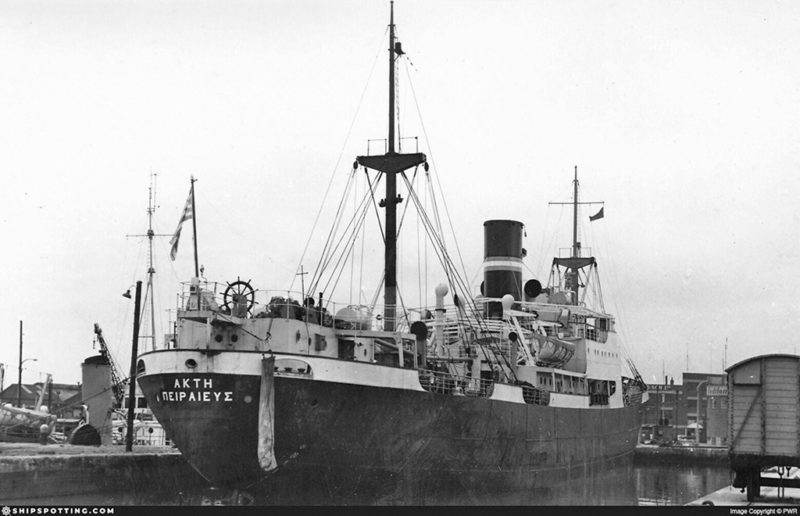
On 8th May 1965 she was sold to Lisboa Compania Naviera S.A. of Piraeus and renamed Akti (above) and on 16th October of the same year she caught fire off the Nieuwe Waterweg whilst on a voyage from Massowah to Rotterdam with a cargo of fishmeal and seed expellers. She was beached at Elbehaven after being taken tow but later the same day turned on to her beam-ends. She was subsequently declared a constructive loss. Ulrich Harms who righted her using the floating cranes Magnus I and Magnus II purchased the wreck.
On 7th November 1966 she arrived at Simons’ Scheepsslopperij N.V., Feijenoorddijk, Rotterdam to be broken up.
VOLO
1,797 grt., 717 tons net, 2,117 tons deadweight. 283.8 feet in length 42.2 feet beam. Depth17.2 feet. draught of 15.5 feet. Her engines were manufactured by Swan, Hunter.
She was launched on 15th July 1946 at the Tyne yard of Swan, Hunter and Wigham Richardson and was handed over in December 1946 .
On 25th October 1954 she ran aground at Halden and sustained considerable bottom damage whilst on passage from Oslo to Hull via Halden.
On 4th November 1960 she caught fire whilst berthed in Oslo. Her central superstructure was burnt out and her hull damaged by explosions caused by overheating of chemicals in cargo. The fire started in No.2. hold and spread to a cargo of wood wool during the afternoon and burned for over 24 hours. Repairs were completed by A/B Gotaverken, Gothenburg and vessel returned to service on the Stockholm route on 3rd February 1961.
On 11th June 1969 she was sold to Malta Maritime Services Ltd., Valletta for £30,000 and renamed Avolos (above).
After her rebuild she looked very different and more modern (above). Later that year she was sold to Maltese National Lines, Ltd. of Valletta.
In 1974 she was sold to Sea Malta Co. Ltd. of Valletta and renamed Mdina (above), but was laid up at Malta two years later. In 1979 she was sold to Carmelo Sanfilippo, Catania, then resold to Attilio Tringali and demolition commenced at Augusta Sicily in August 1979.
TINTO
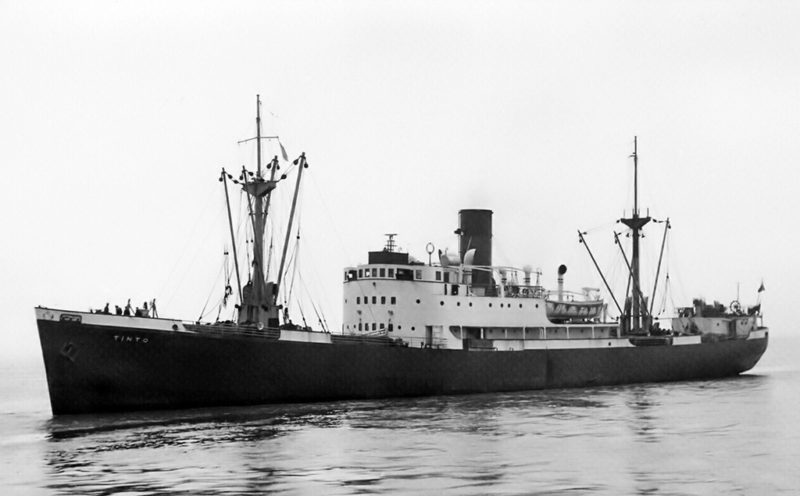
1,795 grt, 757 tons net, 2,137 tons deadweight. 284.3 feet in length. 42.2 feet beam. 17.2 feet depth. 15.5 feet draught. Her engines were manufactured by Central Marine Engine Works, West Hartlepool.
She was launched by Henry Robb Ltd., Leith on 27th August 1946 and was completed in January 1947.
On 26th August 1955 she ran aground at Drammen while on a voyage from Oslo to Hull causing considerable damage to her rudder and propeller, but was refloated the following day.
On 3rd December 1956 she went aground at full speed at Kamsundet, South of Haugesund whilst on a voyage from Trondheim to Hull. She was refloated on the 6th December and was found to have considerable hull damage which was repaired.
On 12th May 1966 she was sold to M & G Shipping Ltd. (Mann, Greenfield Ltd.) of Gibraltar and renamed Kate M.G., being renamed Bogota later the same year.
The following year she was sold to Western Hydrofoil Ltd., Freeport, Bahamas and renamed Hopi. However, it is thought that she never traded under this name.
In December 1967 she was sold by order of U.S. Marshal, Miami to Victor Stephen of Miami and renamed Bogota under the Honduras flag.
In 1968 she was transferred to Dominican Republic registry and renamed Victoria.
On 16th June 1969 she suffered a boiler explosion off west coast of Cuba while on passage from Haiti to Miami, with the sad loss of four of her crew. Four days later she arrived at Miami in tow and was laid up.
In 1971 she was reported as lying at Santa Marta, Columbia in a badly damaged state.
On 21st May 1972 she broke her moorings, and ran aground one mile east of the mouth of the Haina River in the Dominican Republic and she was dragged by the current and stranded. She was broken up at Santo Domingo the following year.

TRURO
1,795 grt, 757 net tons, 2,137 tons deadweight. 284.3 feet in length. 42.2 feet beam 17.2 feet depth. 15.5 feet draught. Her engines were manufactured by Central Marine Engine Works, West Hartlepool.
She was launched by Henry Robb Ltd. at Leith on 11th November 1946 and completed in March 1947.
On 3rd May 1954 she sustained bottom damage when ran aground at Mariegrundet, Stockholm Archipelago whilst on a voyage from Hull to Stockholm with general cargo. She was refloated and repaired in Stockholm.
On 6th January 1958 she was damaged in a collision with Ben Line’s Benattow off the King George V Dock, Hull.
On 22nd May 1968 she was sold to W.J. Towell & Co., Kuwait and renamed Gulf Noor and in 1971 she joined Five Trust Shipping Co. S.A. Panama (Gokal Agencies Co., Basrah) and was renamed Gulf Prosperity.
On 28th May 1971 she arrived at Karachi to be broken up by Hashim M. Ganchi & Co. Ltd.
CARLO
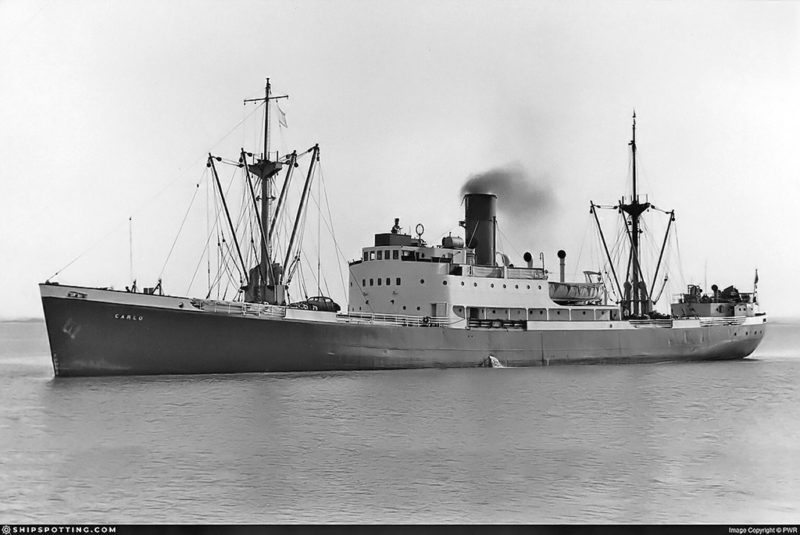
1,799 grt, 757 net tons, 2,137 tons deadweight. 284.3 feet in length. 42.2 feet beam 17.3 feet depth and 15.5 feet draught. Her engines were built by Hall, Russell.
She was launched by Hall, Russell & Co. Ltd., Aberdeen on 23rd January 1947 and completed in December 1947.
On 30th January 1965 she was damaged in collision with the 500grt West German vessel Bewa in the Kiel, Canal.
On 25th July 1966 she was sold to Christos M. Sarlis & Co. of Piraeus and renamed Pelasgos, then on 16th October 1972 she arrived at Perama to be broken up by Anestis Katimertzoglou & Co. “Sithiroscrap”.
BRAVO
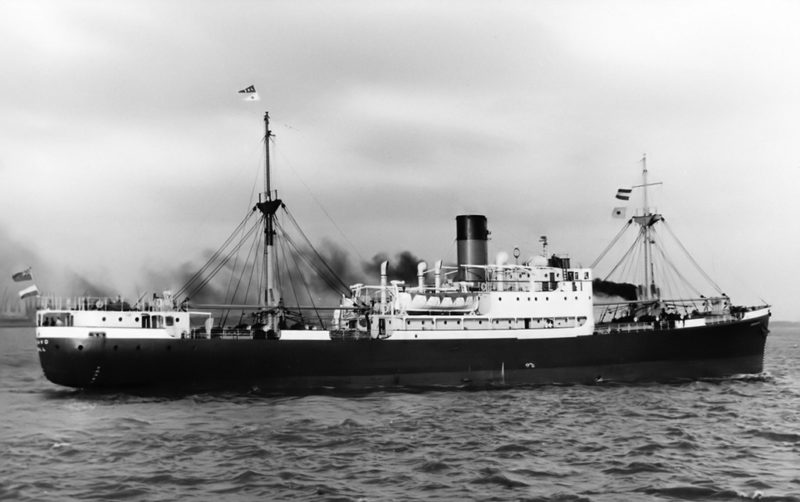
1,798 grt, 760 net tons, 2,137 tons deadweight. 284.3 feet in length. 42.2 feet beam 17.2 feet in depth and a draught of 15.5 feet. Engines were built by Central Marine Engine Works, West Hartlepool.
She was launched by Henry Robb Ltd., Leith on 6th February 1947 and completed in June of that year.
On 11th April 1959 she ran aground at Murvik Trondheimsfjord. She was refloated and proceeded to Trondheim with bottom damage for dry-docking.
On 16th June 1962 she put into Leixoes with a fire in No. 1 hold, which was extinguished by the shore fire brigade.
Later that year on 2nd October she seriously damaged the 470grt Norwegian motor vessel Stord, owned by Hardanger Sunnhordlandske Dampskibsselskab of Bergen, in a collision near Bergen. Fortunately the damage to Bravo was not serious.
On 16th May 1966 she was sold to Fairtide Ltd. (A.J. Kazantzis & D.J. Bradley), Rochester, Kent and was renamed Constantine and the following year she was transferred to the Maltese registry.
On 18th August 1969 she arrived at Bilbao to be broken up by Teodoro Fernandez.
Bravo featured in a 1950 documentary film titled “Berth 24” made by British Transport Films and depicted the unloading and loading of the vessel in Hull docks.
Actual dock employees were used and Bravo unloaded its cargo of timber and grain, often seen in dangerous circumstances. Dockers are seen pushing the grain across the hold with giant “paddles” and without the wearing of masks, seemingly oblivious to the dangers of breathing in the dust. A single strand on a crane lifted long planks of wood, men working underneath, without a hard hat in sight. The film could be used today as “how not to do it.” Other cargo discharged included large rolls of paper, barrels and boxwood.
The only actor used in the film portrays a Swedish businessman who bought a mechanical digger and a live prize bull. Both the digger and bull are seen being lowered into the hold of the ship, giving an example of the diverse cargoes carried by the ship. A pen in the bottom of the hold has been constructed for the bull that was provided with copious amounts of straw and feed. Dockers are also seen packing large bales of cargo around the sides of the hold. The final scenes show Bravo leaving Hull on its journey back to Gothenburg, with the aid of the company tug Presto.
LEO
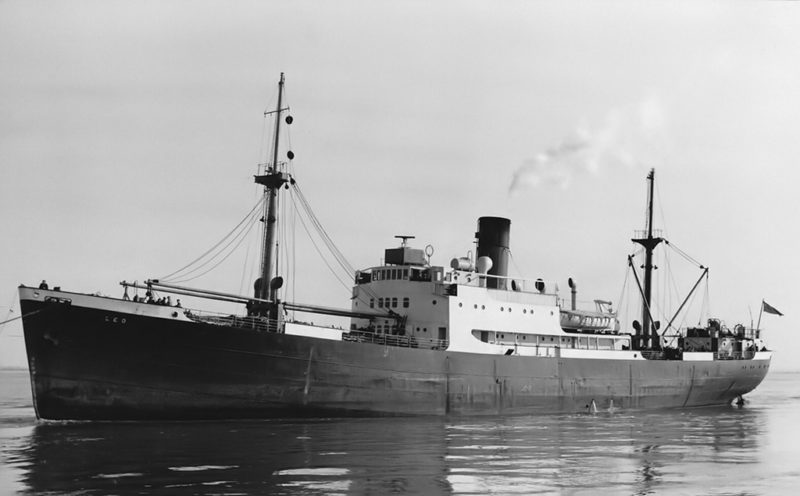
1,792 grt, 712 net tons, 2,117 deadweight tons. 283.8 feet in length. 42.2 feet beam 17.2 feet in depth and a draught of 15.5 feet.
Her engines were built by Swan, Hunter.
On 5th May 1947 she was launched by Swan, Hunter & Wigham Richardson Ltd., on the Tyne and completed in September 1947.
On 21st July 1961 she ran aground at Benghazi and was refloated after discharging some cargo two days later.
On 27th April 1966 she suffered serious bow damage in collision with the 6,629grt East German motor vessel Magdeburg of Deutsche Seereederei in the Thames Estuary.
She was sold to Malta Maritime Services, Valletta in July 1967, renamed Malcolm Pace and handed over on the 21st October.
In 1968 because of opposition from the Inter-Mediterranean Lines Conference, who threatened a boycott of Malta Maritime Services Ltd., she was operated under the name of Maltese National Lines Ltd., Bahamas and in 1970 they renamed her Oleos.
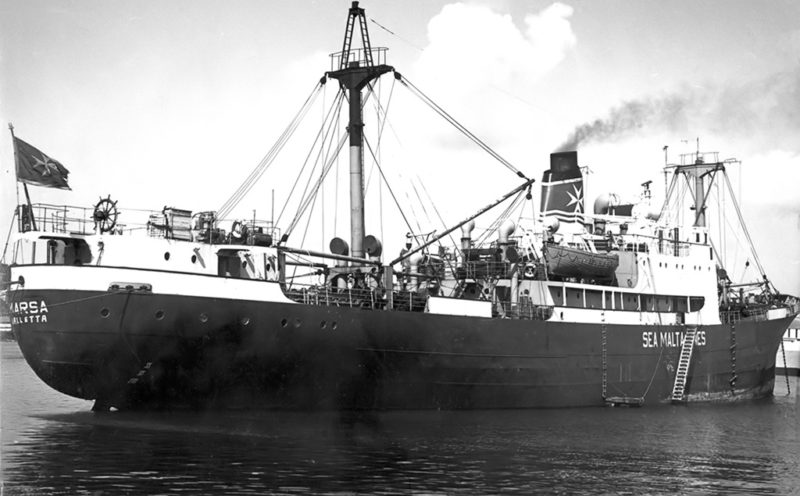
On 10th March 1973 she was damaged by fire in Malta and in 1974 she was transferred to Sea Matla Co. Ltd., renamed Marsa (above) and registered in Malte, but two years later she was laid up at Malte. In 1979 she was broken up by Carmelo Sanfilippo at Catania.
SILVIO
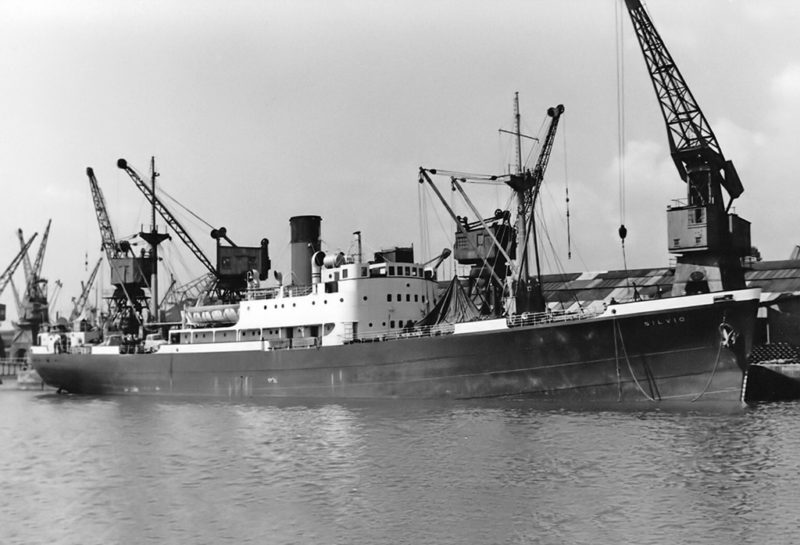
1,798 grt, 760 tons net, 2,137 tons deadweight. 284.3 feet in length. 42.2 feet beam. 17.2 feet depth and 15.5 feet draught. Her engines were built by Central Marine Engine Works, West Hartlepool.
She was launched by Henry Robb Ltd., Leith on 18th July 1947 and completed in November.
On 27th October 1966 she was sold to Malta Maritime Services Ltd. and renamed Kristine Pace (above right). In 1968 because of the same opposition that the Malcolm Pace (ex-Leo) suffered she operated under the name of Maltese National Lines Ltd., Bahamas.
On 5th September at Malta fire broke out in the her engine room causing severe damage. The fire was extinguished the following day by fire fighting tugs and the British Royal Naval salvage vessel Sea Salvor. She was then laid up at Malta.
In October 1969 she was sold in a damaged condition to S. Bezzina and Sons, Malta who re-sold her to Italian ship breakers.
On 12th November 1969 she left Malta for La Spezia in tow of Italian tug Brasile to be broken up by C.N. Lotti S.p.A.
In 1965 Ellerman’s Wilson Line entered into an agreement to operate a new passenger and container service with Svea Line of Stockholm and Swedish Lloyd of Gothenburg.
New ships to be operated would carry 400 passengers and 100 cars, this together with general containerisation proved the death knell for the Malmo Class.
All the Malmo class ships apart from Truro, went to owners in the Mediterranean, the former ship going to the Middle East.

All were broken up or were out of service by 1976.
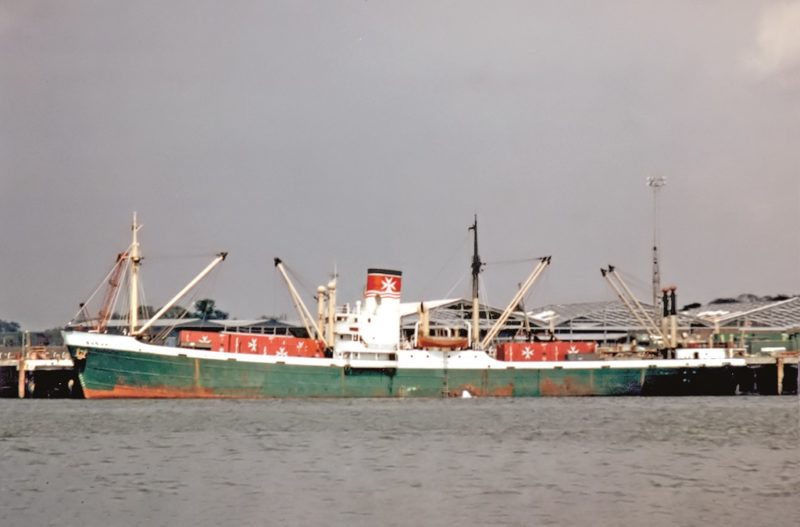
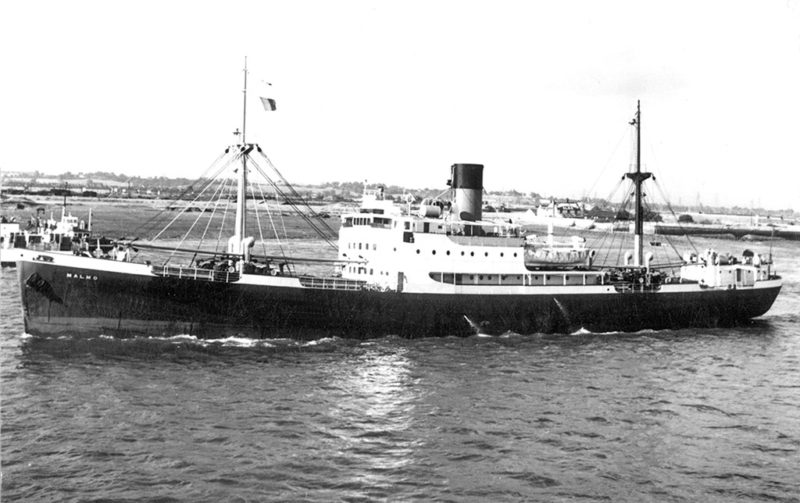
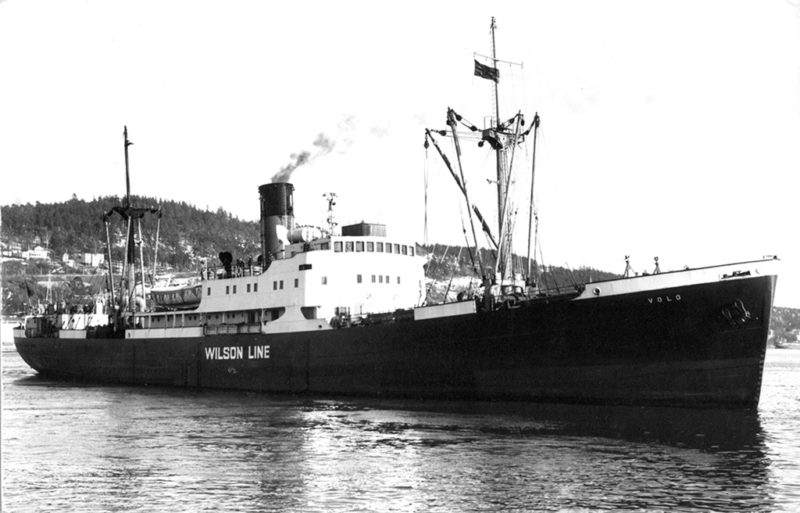
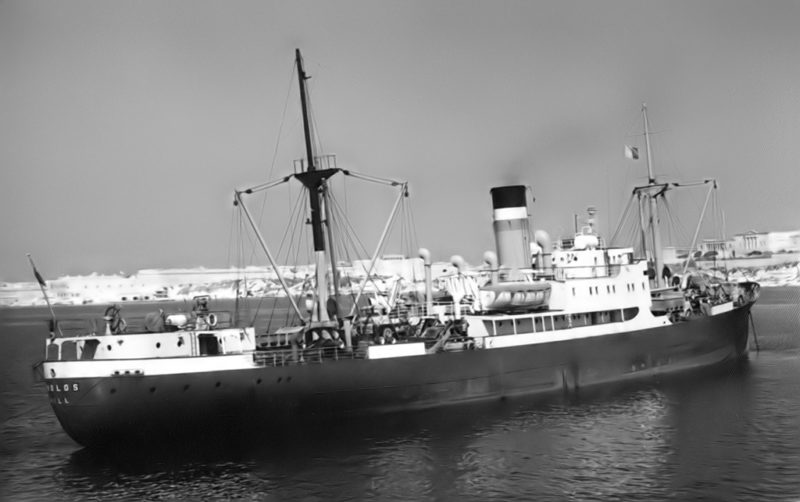
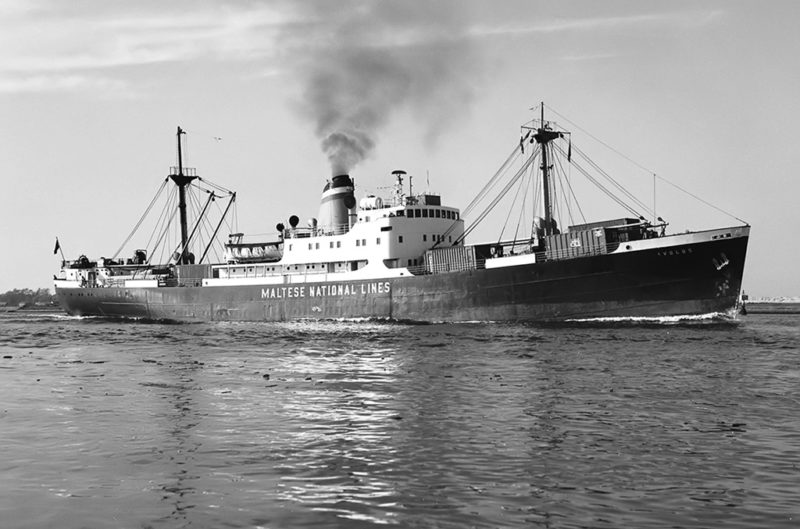
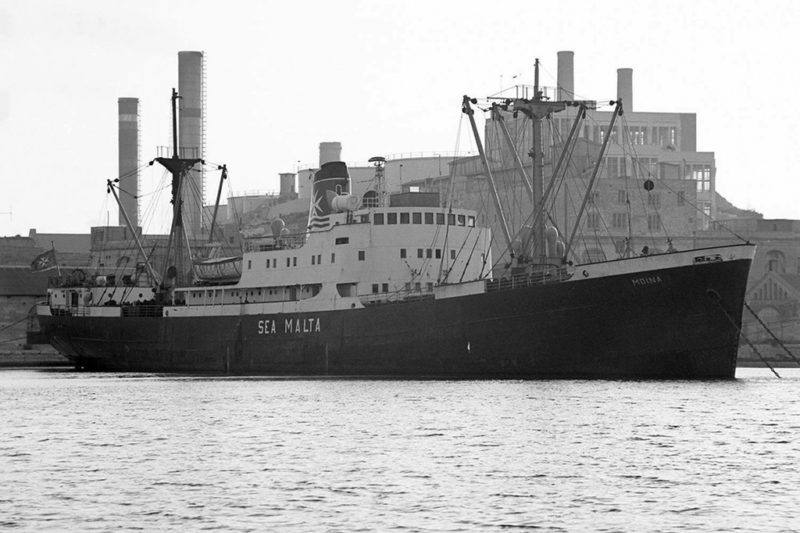
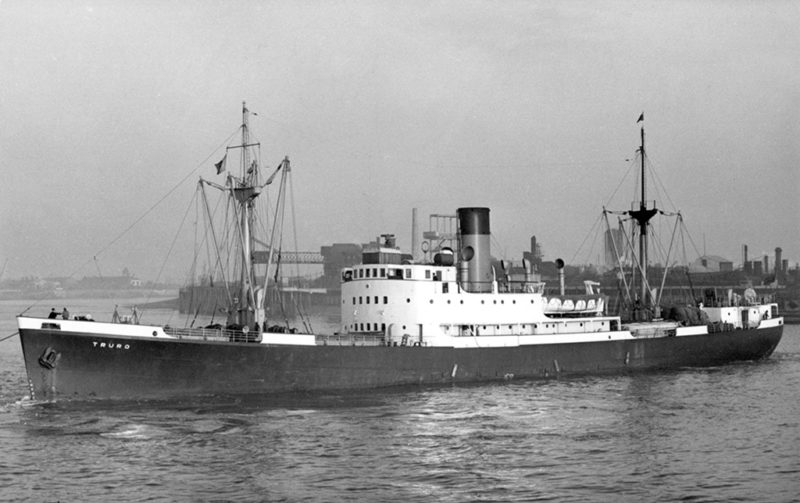
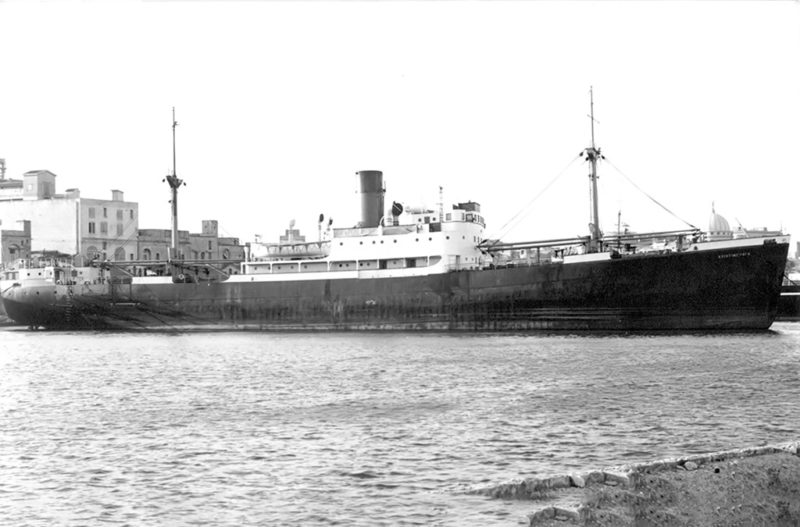
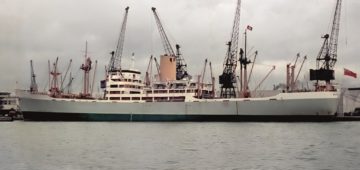



Comments
Sorry, comments are closed for this item